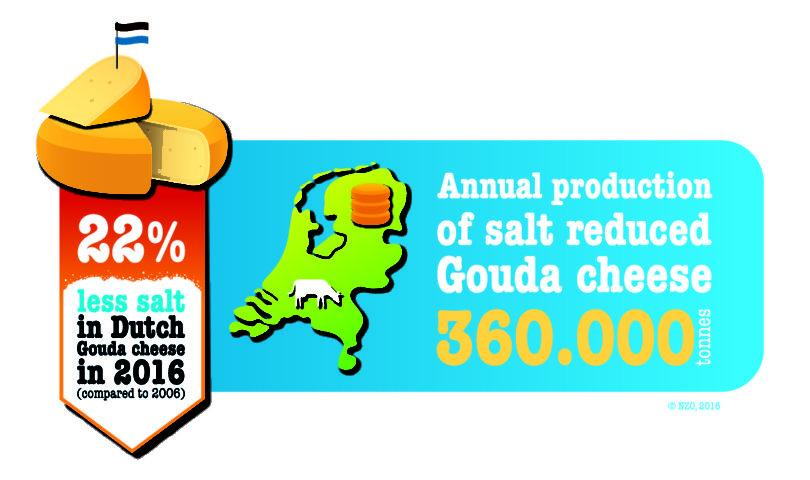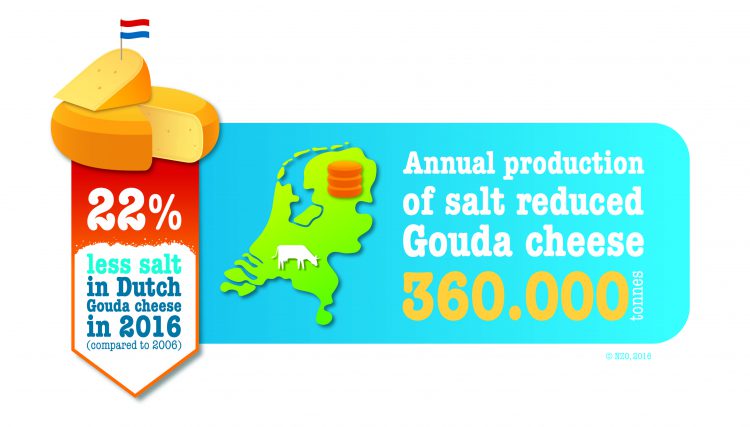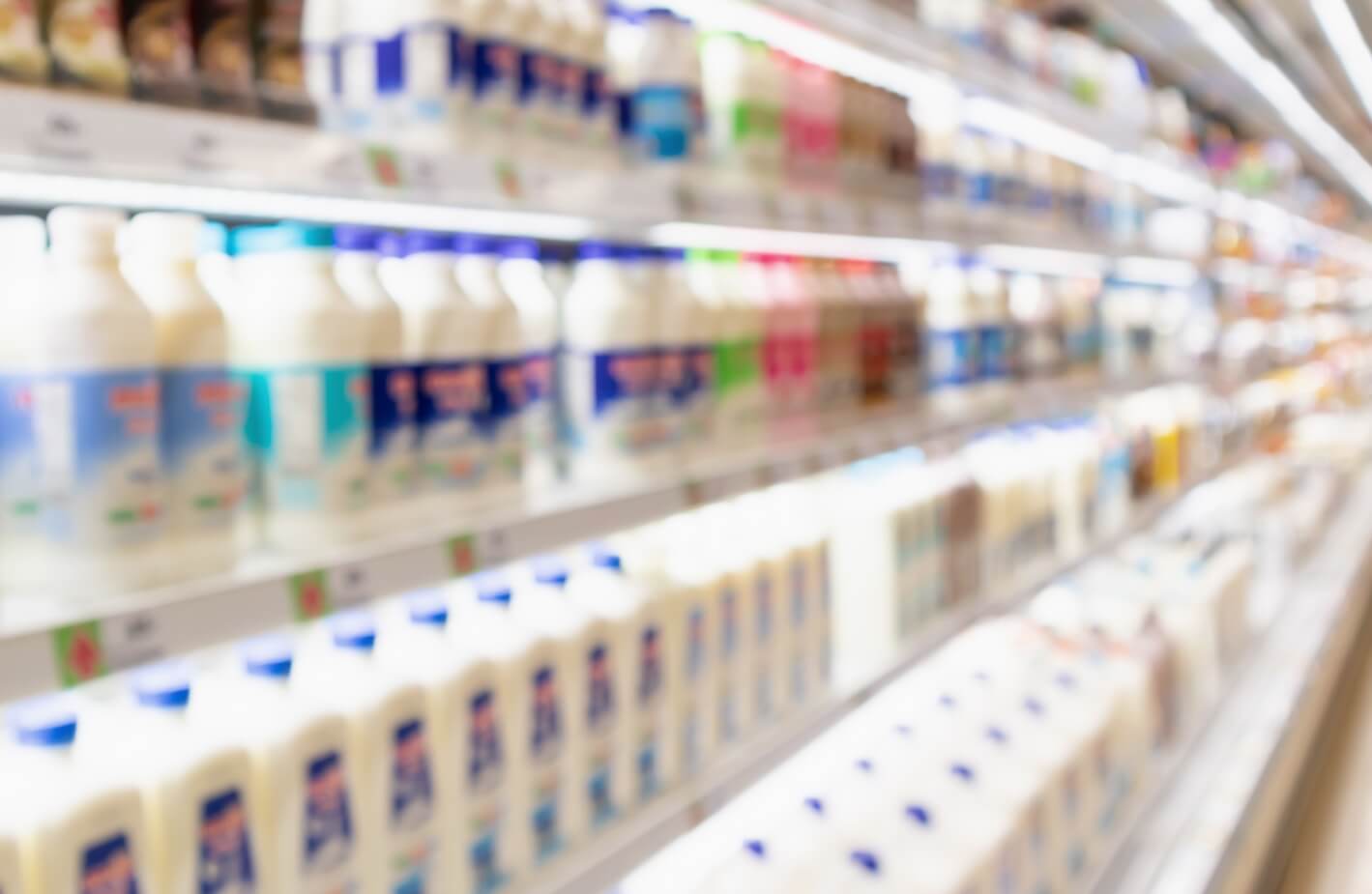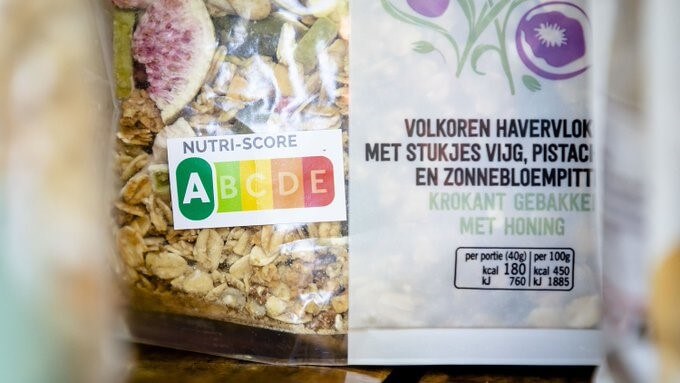

Nutrition
News overviewSalt content in Gouda cheese has dropped 22,2% since 2006
Since 2006, the Dutch dairy sector has made successful strides toward reducing the salt content in Gouda cheese. Between 2006 and the end of 2015, cheese makers have realized a 22,2% drop in the amount of sodium in Gouda cheese.
The cheese producers of the NZO started an initiative in 2006 to gradually reduce the salt content in Gouda cheese. By 2010, their measures had achieved a 14% reduction compared to the 2006 Dutch Table of Food Nutrients (the “Nederlandse Voedingsmiddelentabel” or NEVO).
In 2010, the participating companies committed to realizing another 10% salt reduction. Young Gouda’s targeted average salt content, for example, was set at 687 mg of sodium per 100 g of cheese (relative to the 2011 NEVO). At the end of 2015, an independent audit of the factories found that the average salt content had dropped to 686 mg of sodium per 100 g of cheese. The Dutch dairy sector has managed to achieve a 22,2% salt reduction in Gouda cheese.
Salt plays an important role in the shelf life of cheese, as well as in its stability and flavor. Naturally ripened cheese like Gouda must guarantee quality and safety at the end of the ripening period. This is why reducing its salt content requires a great deal of research and time, and why the reduction of the salt content must be realized gradually.





